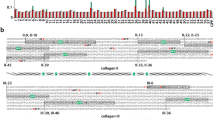Abstract.
The zinc- and calcium-dependent family of proteins called the matrix metalloproteinases are collectively responsible for the degradation of the extracellular matrix. Members of this family such as the collagenases, stromelysins and the gelatinases are involved in the routine tissue remodelling processes such as wound healing, embryonic growth and angiogenesis. Under normal circumstances the proteolytic activity of these proteins are precisely controlled at the transcriptional level, the production of the proteins in their inactive zymogen forms and also by the co-secretion of endogenous inhibitors. Imbalance between the active enzymes and their natural inhibitors leads to the accelerated destruction of connective tissue associated with the pathology of diseases such as rheumatoid and oesteoarthirtis. The potential for using specific enzyme inhibitors as therapeutic agents to redress this balance has led to intensive research focused on the design, syntheses and molecular structural analyses of low molecular weight inhibitors of this family of proteins. This review describes the essential structural principles and molecular interactions implicated in the innovation of matrix metalloproteinase inhibitors and discusses the features necessary for the specific inhibition of the collagenases.
Similar content being viewed by others
Author information
Authors and Affiliations
Additional information
Electronic Publication
Rights and permissions
About this article
Cite this article
Borkakoti, N. Structural studies of matrix metalloproteinases. J Mol Med 78, 261–268 (2000). https://doi.org/10.1007/s001090000113
Received:
Accepted:
Published:
Issue Date:
DOI: https://doi.org/10.1007/s001090000113




